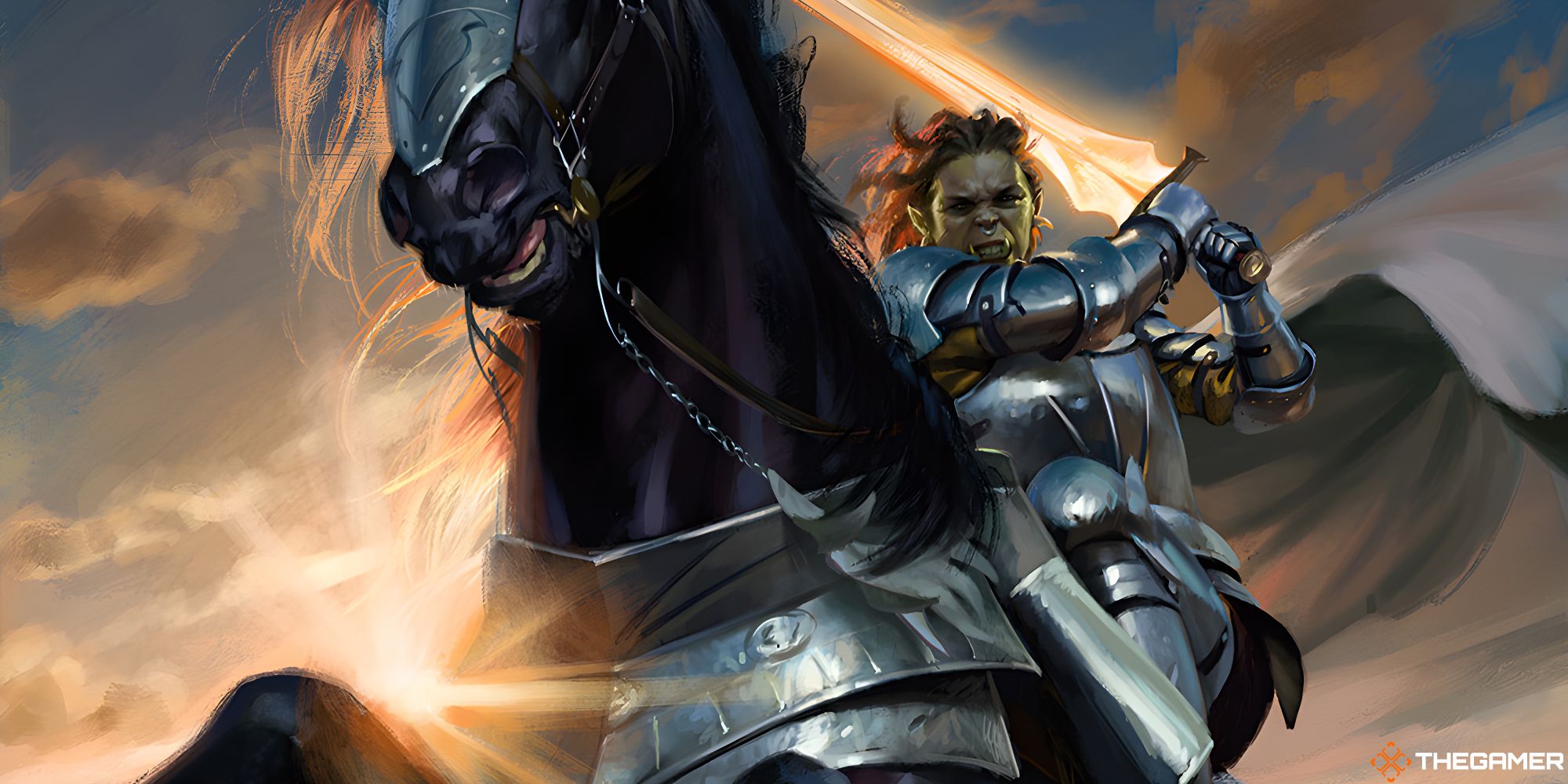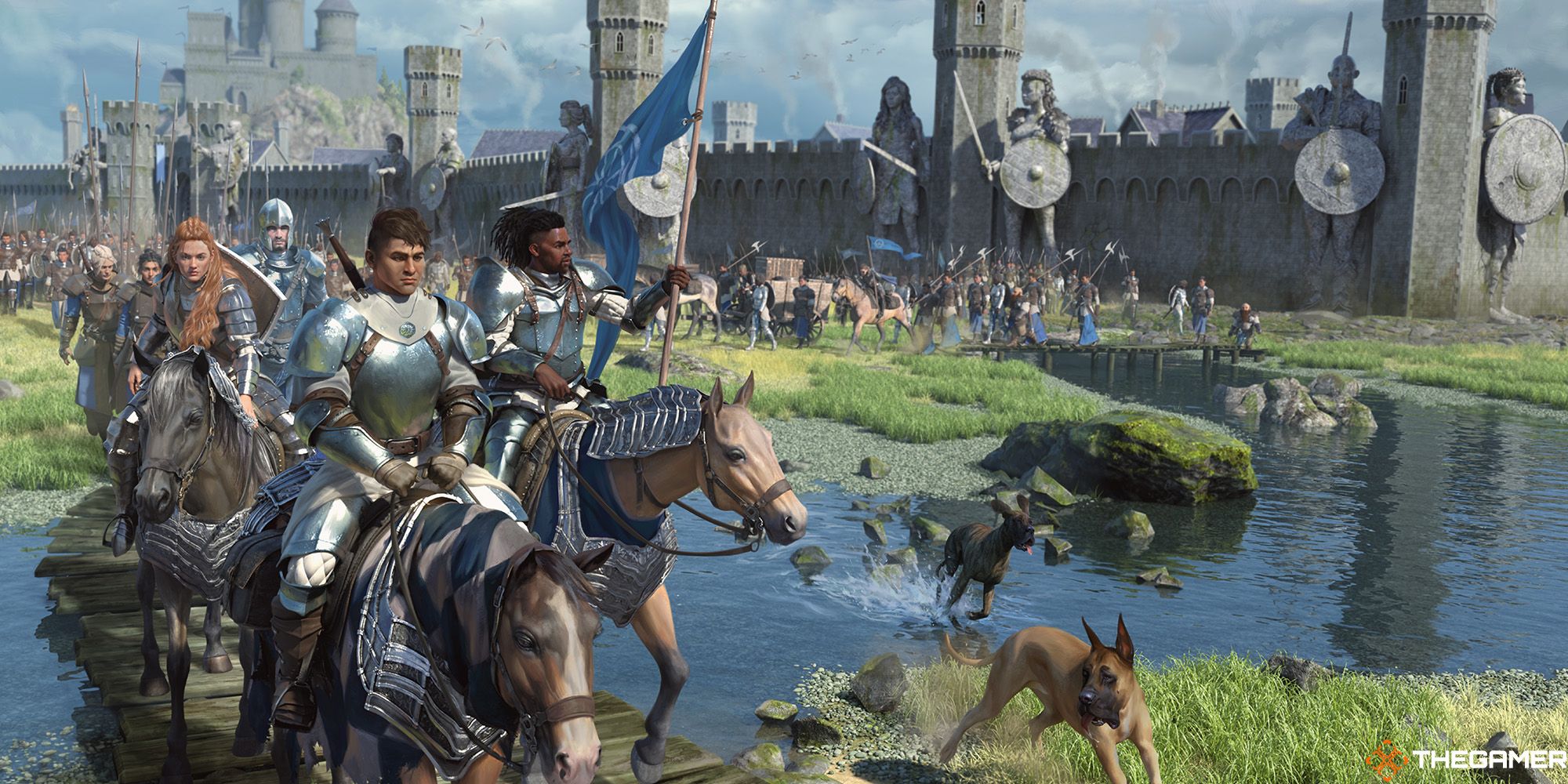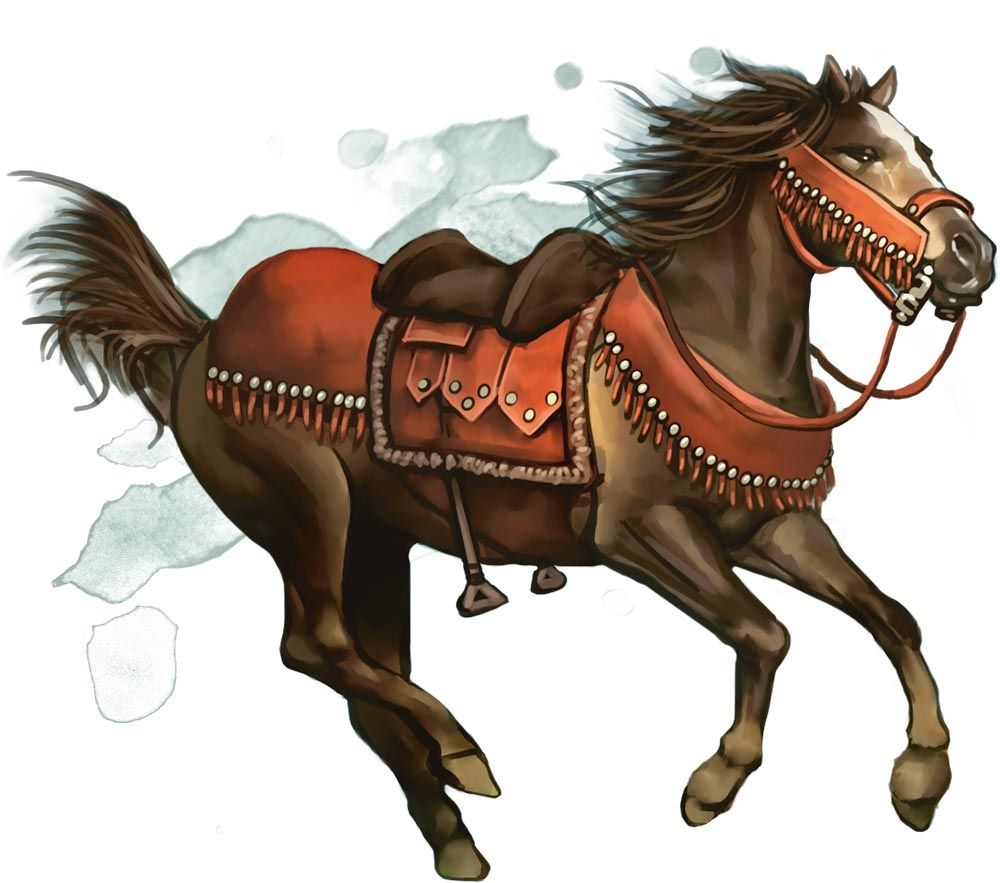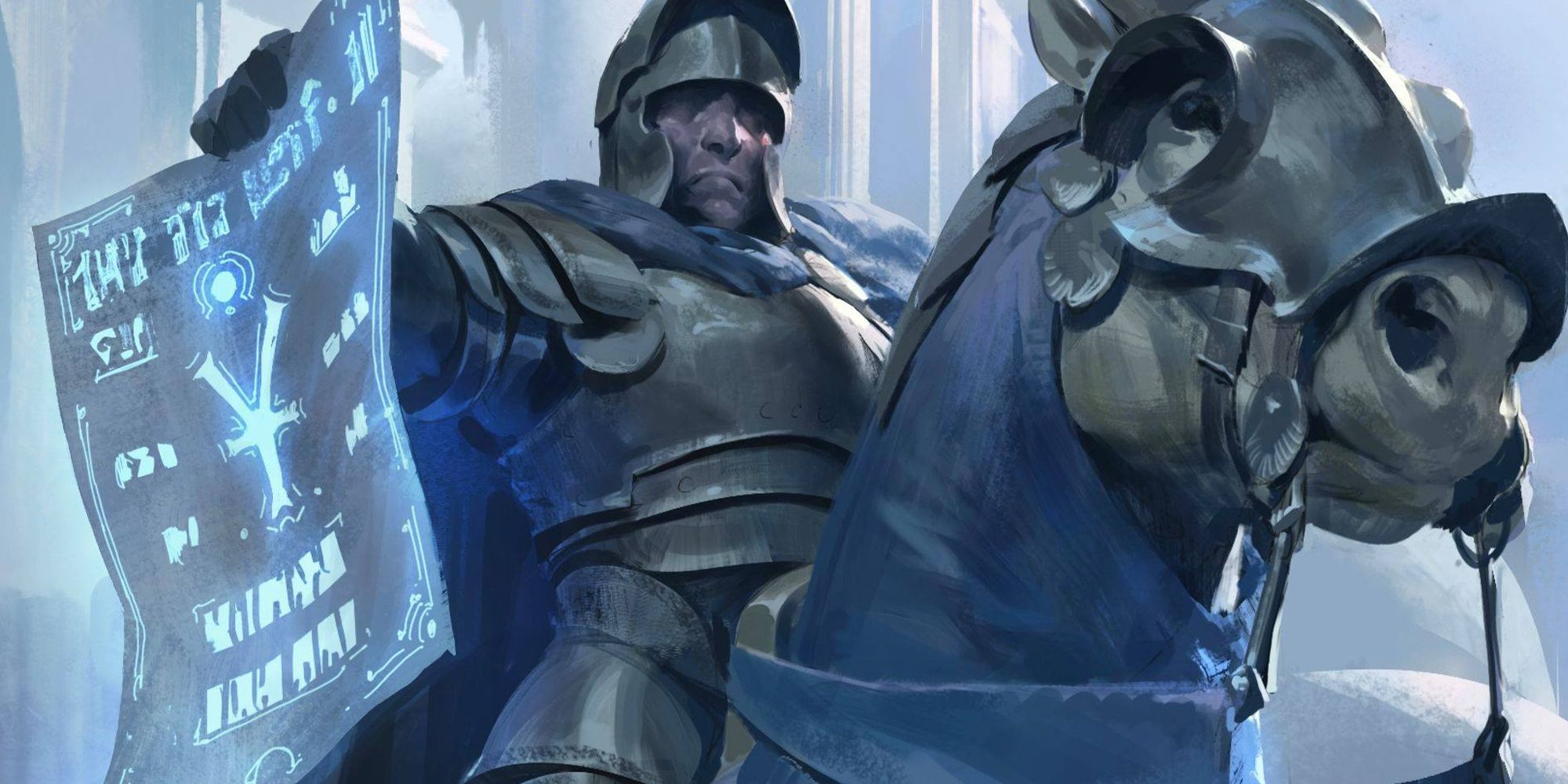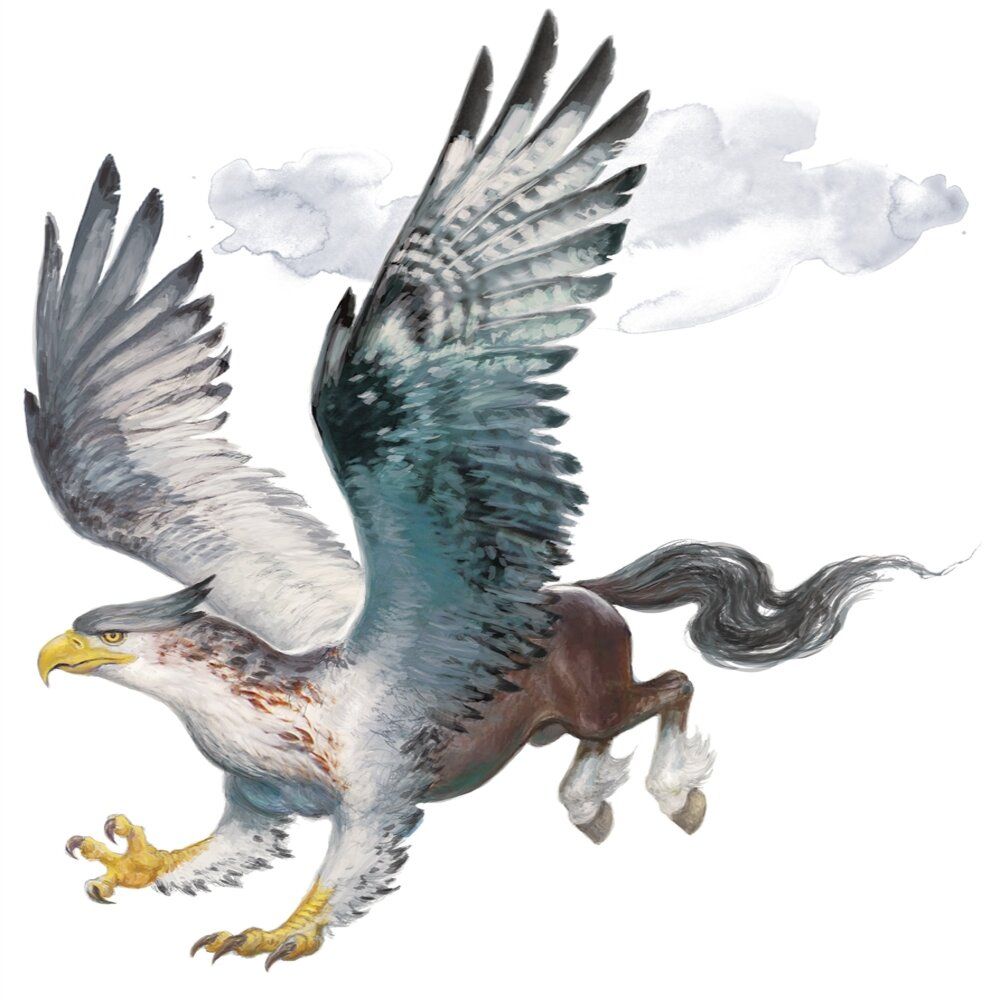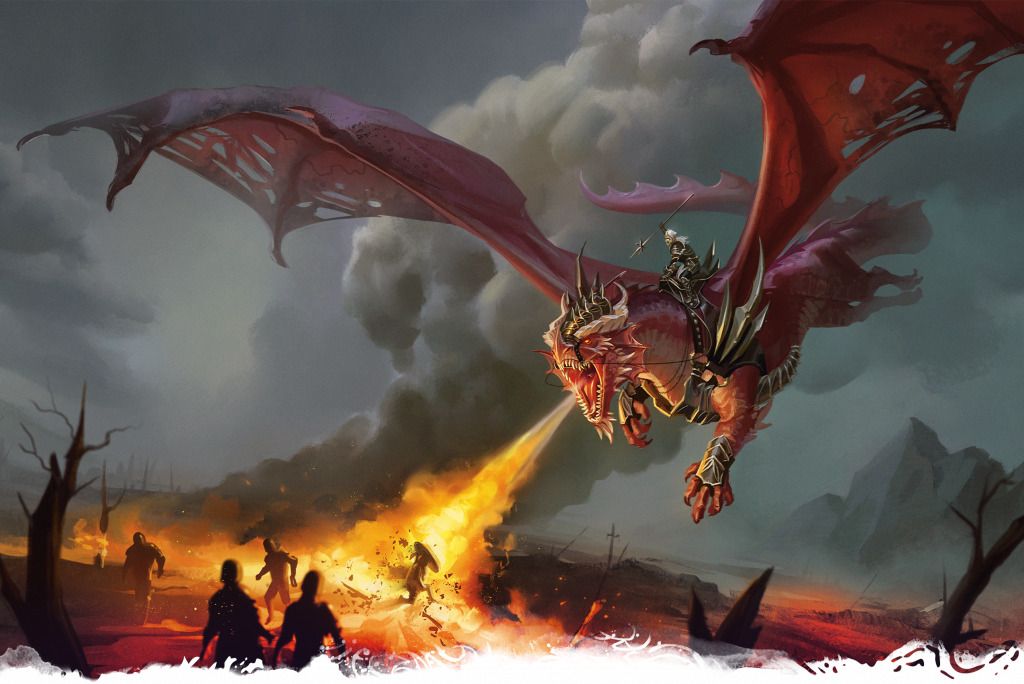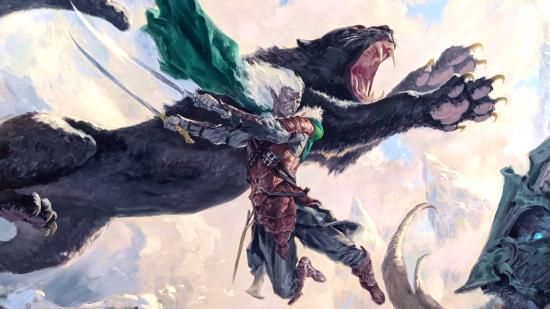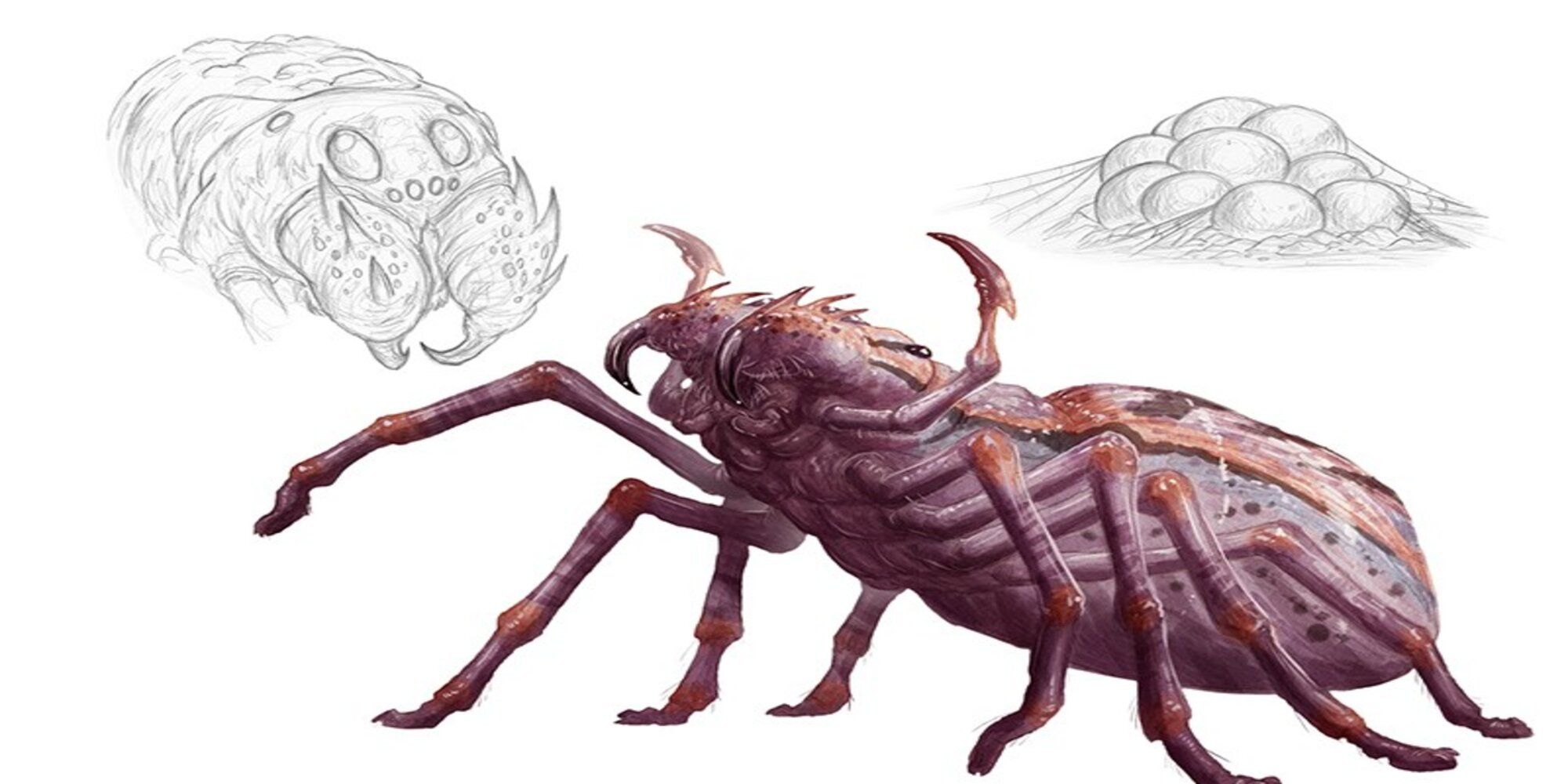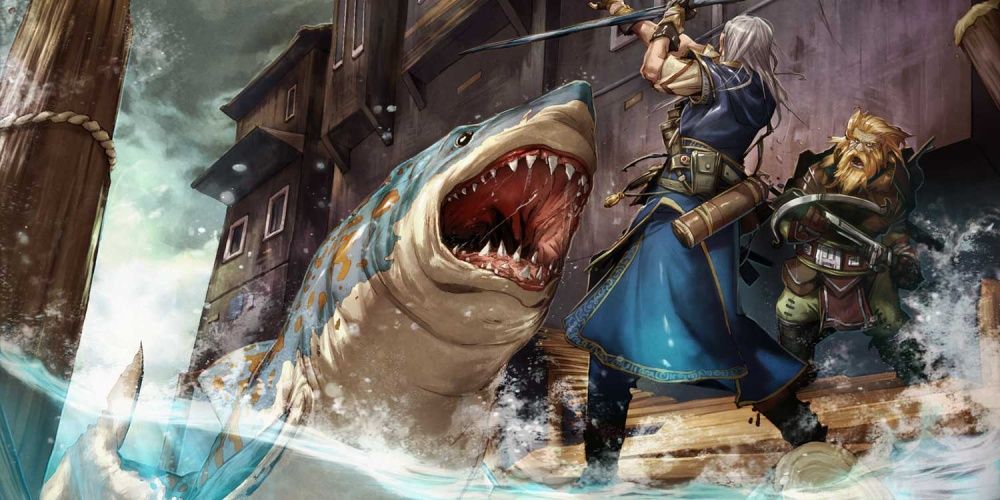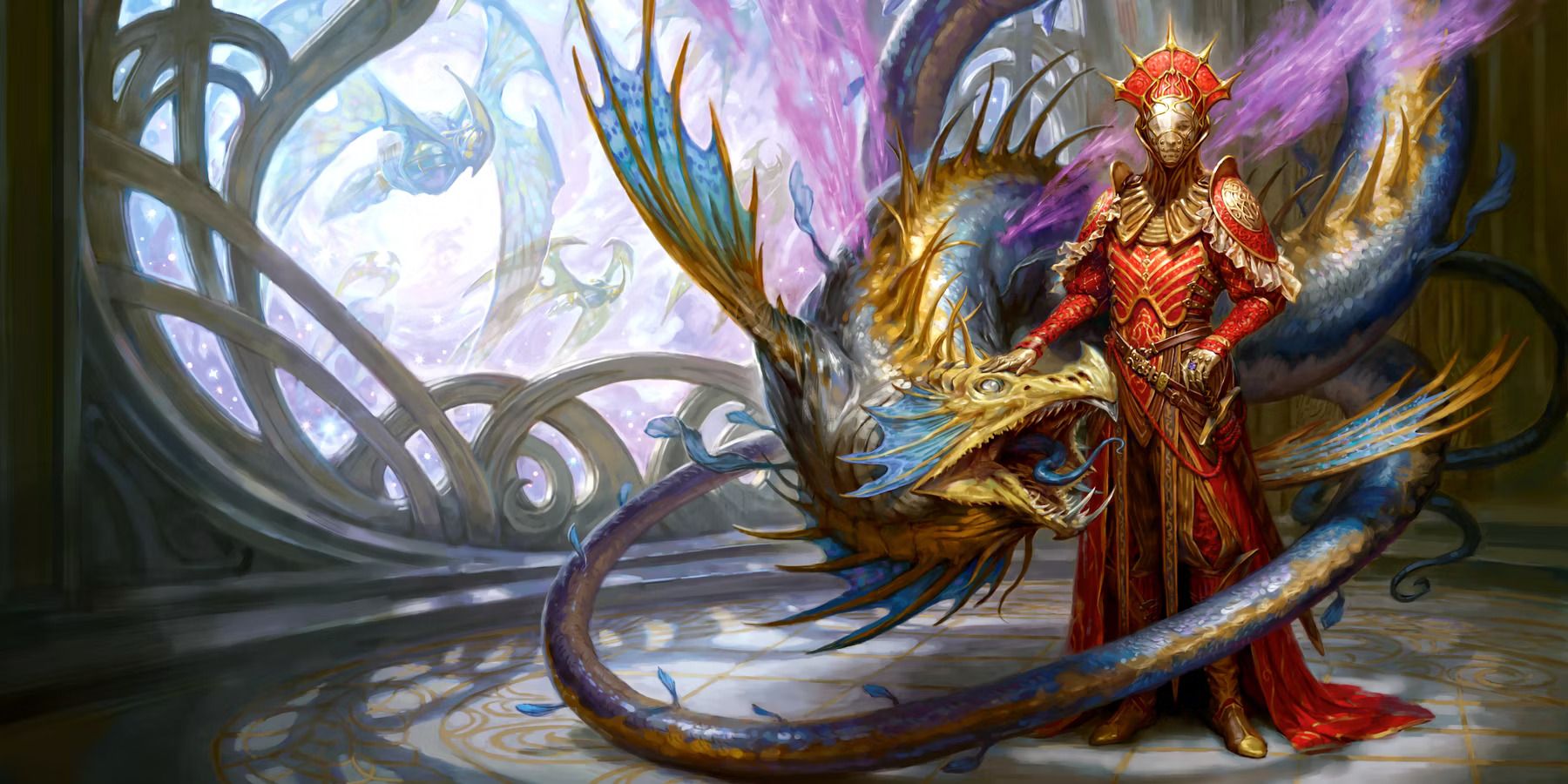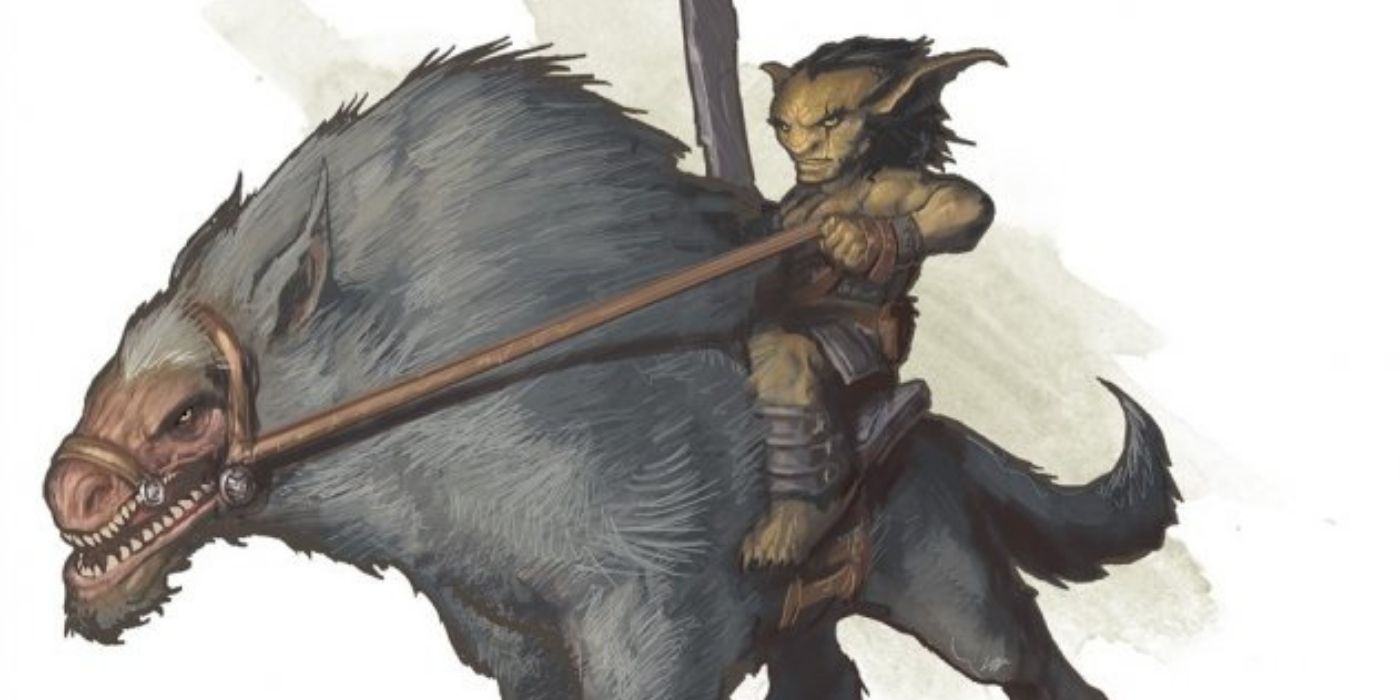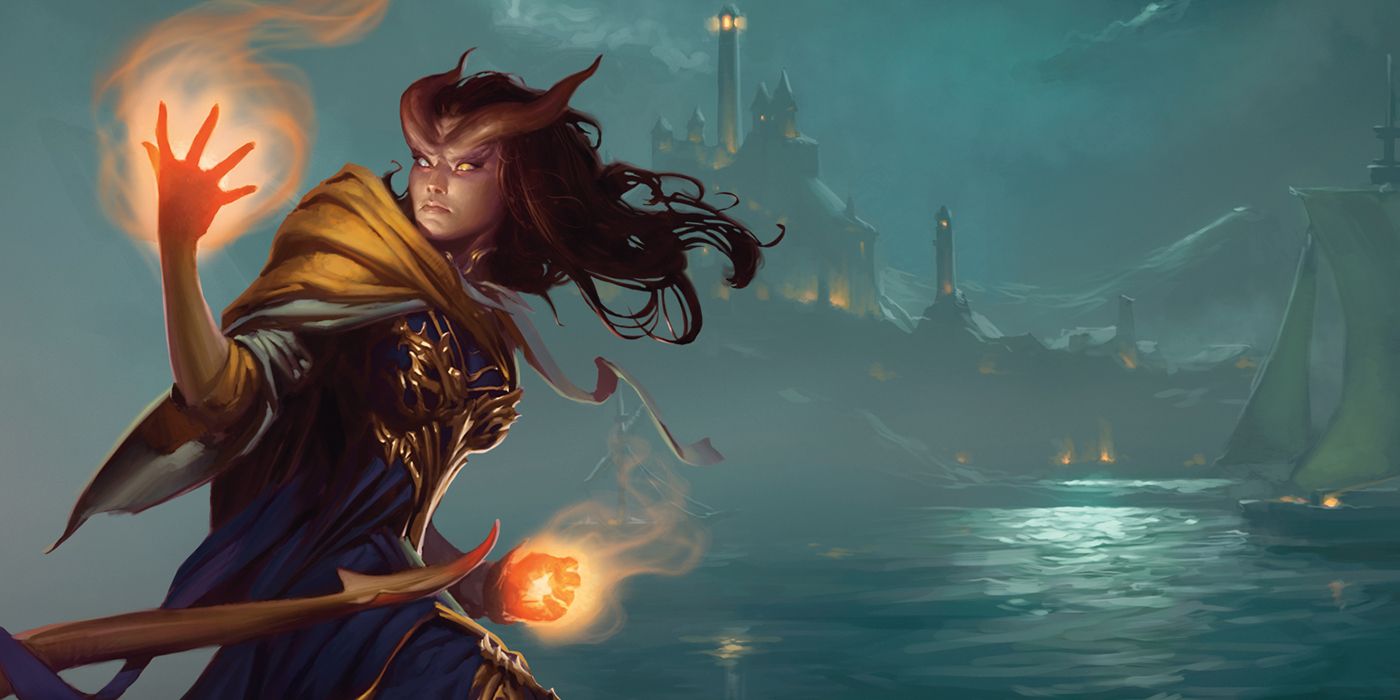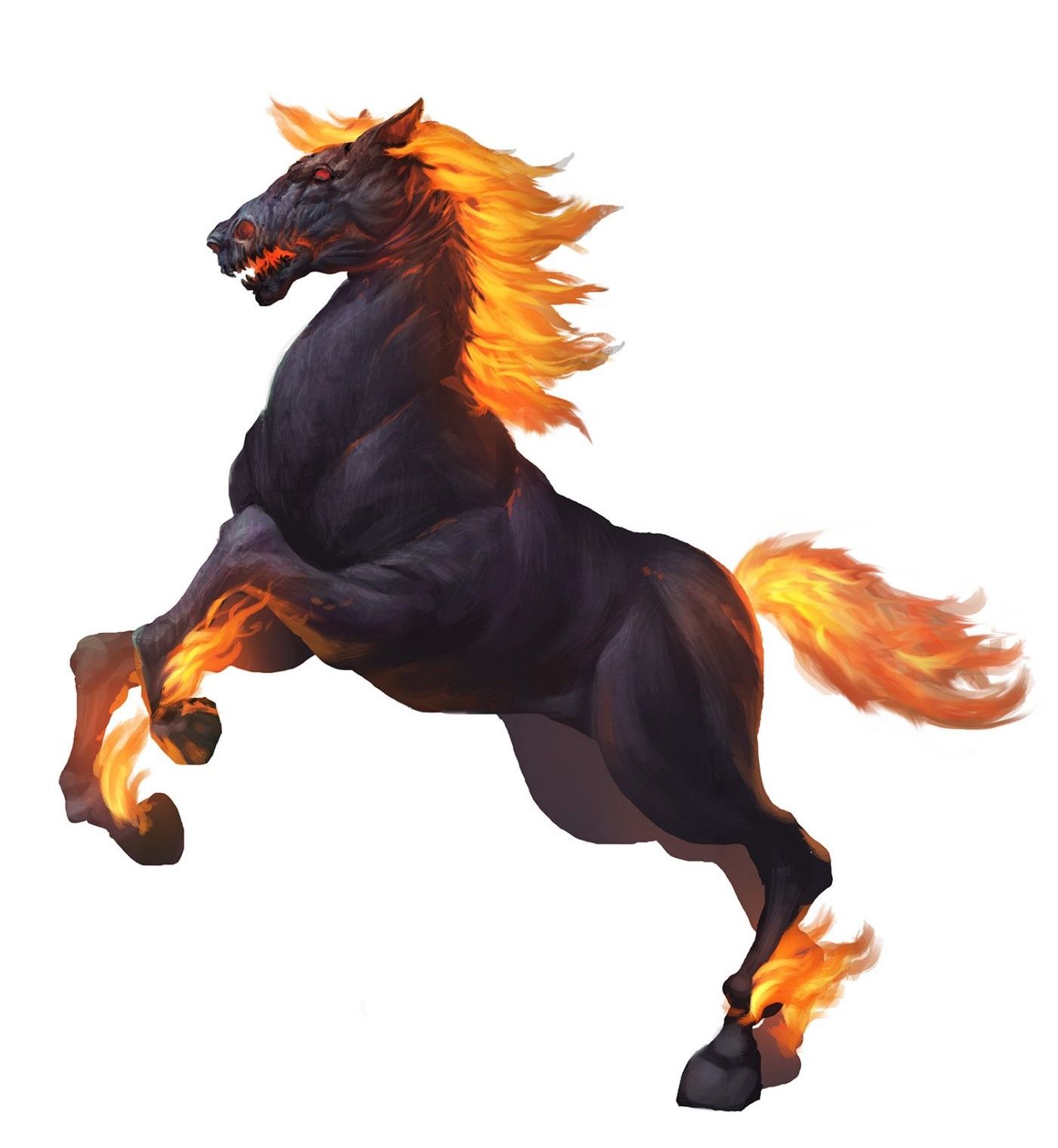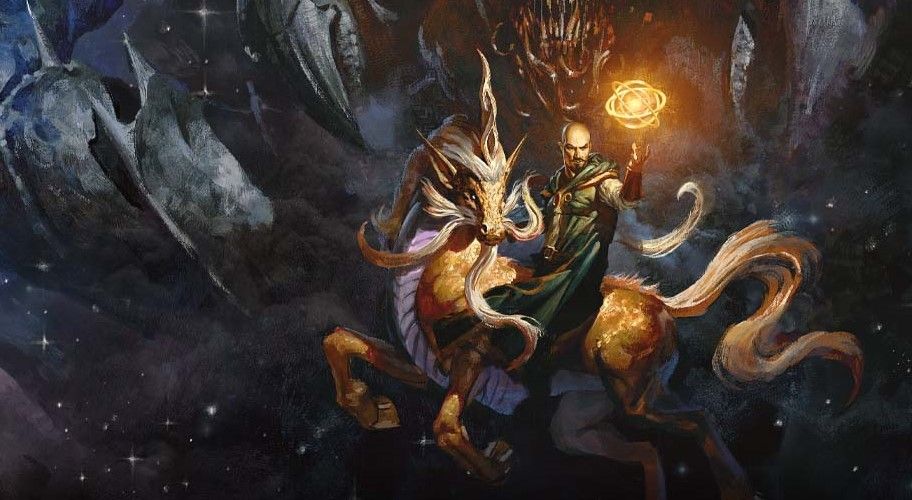Quick Links
Mounted combat in Dungeons & Dragons can be a dream come true for adventurers. The idea of rushing into battle on a trusted steed is a scene that has played often in media and in our imaginations. Whether it's a horse or a griffin or even your Infernal War Machine, mounts can revolutionize how you approach your latest adventure.
However, the mechanics behind making this idea a reality are a bit confusing. With so much left up to question and vague wordings, we'll give you the rules-as-written to let you as a player or a DM decide what you need to make the most of your mounted experience.
What Is A Mount?
A mount is any creature that you ride. You do not need proficiency to ride a mount (there is no such thing), however, in order for you to ride it, a mount must meet the following three requirements:
- It must be one size larger than you.
- It must have the proper anatomy for riding (it can't be goo).
- It must be a trained and willing creature.
If a creature is not willing to be mounted or is not trained, a DM can decide to make exceptions. Grappling or Animal Handling, for example, can be used to decide if a player successfully tames or mounts a creature.
A mount does not need tack in rules-as-written, like a saddle, reins, stirrups, or other such mechanics. Mechanically, tack also has no rules in fifth edition, so any combat mechanics (like advantage against being knocked off) are entirely left to the DM's discretion.
List Of Standard Mounts
Below is a list of all common mounts found within the main Player's Handbook and Forgotten Realms space. This does exhaust outer books like the Explorer's Guide To Wildemount, Volo's Guide To Monsters, and other such additions to the fifth edition.
Mounted Combat
In combat, things get a little messy. But for general use, there are a few explicit and known rules:
- There are no penalties to a player's saving throws, AC, HP, or other mechanics while mounted.
- When a player is mounted, they can handle two-handed weapons like lances with one hand.
- Mounting and dismounting takes half of the rider's speed or movement regardless of how big the creature is.
- If the player has zero speed, they cannot mount or dismount.
- A player can only mount once during a move.*
- When mounted, the player uses their mount's speed and not their own. They move with their mount.
- Spells cast on the player (like Haste) - or feats specific to you - do not apply to a mount unless specifically stated otherwise or cast on a group with the creature as a target.
*It is unclear in rules-as-written if this is limited to movement during the player's turn in initiative or any move they make. By "once during a move," it can be argued that a player can mount any time they willingly move during any turn (be that due to an item or feat).
Knocked Off: Saving Throws
While mounted, a player or their mount can be targeted (unless they take the Mounted Combatant Feat; more on that below). This means that a mount could be tripped, injured, forcibly moved by magic, knocked over, shot out of the sky, etc.. A mount could also die.
No matter the situation, there's a chance the player or their mount may be knocked to the ground.
If a player's mount would be forcibly moved, they must make a DC 10 Dexterity saving throw to stop themselves from falling off. They can also make this saving throw as a Reaction if their mount is knocked over (via prone, fainting, death, etc.) in order to land on their feet and stop themselves from also falling prone.
If they fail the saving throw, the player falls within 5ft of their mount. The DM chooses where within 5ft of the mount the player falls.
In the case of a flying mount, it is impossible to land on your feet without taking damage. A player will take any fall damage appropriate for the distance they fell as decided by the DM.
Where Am I?: Mounts And Grids
It is not stated in the fifth edition what the rules are exactly on the placement of riders while mounted on large mounts. This is up to the DM's discretion. Generally, there are two options:
- The player occupies all spaces that the mount occupies.
- The player has a specific space within the squares of the mount's occupation.
This is important to decide as this will affect how enemies target the player (if they can at all), any area effects from spells or feets, or how the player deals damage or reaches with melee weapons.
Since the player's speed is separate from the mount's speed, it is also possible for the DM - in the case that they decide to choose "player has a specific space within the mount's" - to allow the player to use their movement within the mount's squares. However, again, this is up to the DM's discretion and can easily become overly complicated.
Controlled Vs. Independent Mounts
There are several ways to play mounts in Dungeons & Dragons, and there is no one correct method. How a mount and their rider operates is largely left open to the DM, the player, and flavor.
To begin, there are two main ways to play mounts during combat:
- Controlled
- Independent
Controlled Mounts
Controlled Mounts are typically controlled by the player and take the same turn in the initiative order as their rider. They can move at any point during the player's turn (either the beginning or the end), and it can only take one of three Actions:
- Dash
- Disengage
- Dodge
They cannot attack.
Disengaging is important with mounts because a mount's movement can trigger Opportunity Attacks. When a creature is given a chance for an Opportunity Attack, they can hit either the player or the mount. Disengage can only be effective with the mount. The player using Disengage with their own character does not count.
Independent Mounts
Independent Mounts are typically intelligent mounts that have their own turn in the initiative order. They must be able to think and act for themselves.
These types of mounts can be controlled by either the DM or a player, depending on the DM's final decision.
Independent Mounts can take all the actions of a Controlled Mount but also take additional types of actions like attacks. For example, a player with a wyvern mount may have their wyvern attack with a bite and stinger attack on the wyvern's turn.
Additionally, movements made with the mount's rider must be made on the mount's turn, not the rider's. A rider cannot interrupt their mount's turn either to make their own actions. As such, having two separate initiative placements requires additional strategy from the player.
If the DM is the one in control of the mount, the movement of the mount is typically either asked by the DM at the end of the mount's turn or movement is given to the player on their character's turn. This reason is why DM-controlled mounts can cause confusion and conflict in parties if done callously.
Important Feats, Spells, And Items
If you're hoping to make Mounted Combat a staple in your game or in your character's adventure, you should consider the following things:
- Invest in the Mounted Combatant Feat
- Learn the Find Steed or Find Greater Steed spell
- Purchase or find the Saddle of the Cavalier (Wondrous Item)
Mounted Combatant Feat
The Mounted Combatant feat is an absolute must for players wishing to either protect their steeds or make mount-riding a staple part of their character. It has no prerequisites, meaning you can gain this feat at any time so long as you have the means to do so.
It boasts the following boons:
- Gain advantage on melee attacks on unmounted creatures that are at least one size smaller than your mount.
- Force attacks made against your mount to be made on yourself instead.
- On Dex-saves where a mount would dodge and take half-damage, they take no damage. If they would normally take full damage, they take half.
Unfortunately, advantage is not given to ranged characters, so those hoping to get bonuses for being a mounted archer see no benefits beyond protecting their mount. However, protection for your mount is incredibly important the higher your level as most mounts typically cannot survive more than one round of advanced, high-level combat.
Additionally, those riding flying creatures will definitely want this feature. The alternative is having your winged mount fall out of the sky and you with it, taking several dice-worth of damage.
In rules-as-written, rogues also get a unique bonus from this feat. Since being mounted always gives you advantage against smaller creatures, this feat can offer a consistent use of Sneak Attack.
Find Steed And Find Greater Steed Spells
For those who might use their steed situationally, fear their mount dying more than anything, or prefer a more magical version of a steed (like Arvak from Elder Scrolls V: Skyrim), you can turn to the Find Steed/Find Greater Steed. It is a 2nd Level Conjuration spell for the Paladin class that costs 10 minutes to cast and has a range of 30ft.
The best benefits of the Find Steed Spell are:
- Your mount can be summoned into existence when needed anywhere.
- Your mount can be resummoned if killed.
- Your mount is able to share spell effects cast by Self-target spells.
Additional benefits include your mount having the capability of understanding your language, communicating telepathically, gaining a bonus to their Intelligence, becoming an ethereal version of their normal counterpart, and you create a long-lasting personal bond.
The Greater Steed Spell is a 4th Level Conjuration spell specifically from Xanathar's Guide To Everything, and it has the same benefits as the last spell with the twist being that you can summon even larger, higher AC creatures like griffins, sabertooth cats, and more.
In rules-as-written, the Smite spells are Self-target spells. As mounts share spell effects cast by Self-target spells, it is technically possible for a mount to Smite. Attacks made by the mount can technically trigger the Smite effect while active. A DM may or may not allow this.
Saddle of the Cavalier
For those who really like magic items (especially DM's you like giving magic items) and love mounts, look no further than the Saddle of the Cavalier.
The saddle is a Wondrous Item of the Uncommon variety. It reads:
"While in this saddle on a mount, you can't be dismounted against your will if you're conscious, and attack rolls against the mount have disadvantage.
If you're a fan of mounts but might not want to invest one of your feats into mounted combatant, the Saddle of the Cavalier might be a nice item to have for the disadvantage on attacking rolls against your mount. It's not as reliable as the feat, but it also comes with the added bonus of being exempt from being dismounted.
Regardless of what a player chooses for a mount, how a DM chooses to interpret rules, or what measures either take to protect their precious friends, we can all agree that mounts add a special kind of flavor to both combat and roleplay opportunities. At the very least, why not try giving them a chance - and maybe a fancy saddle too?

